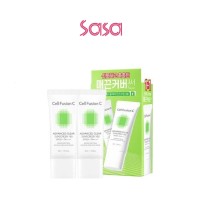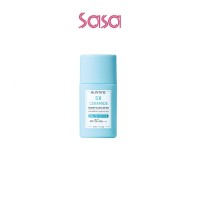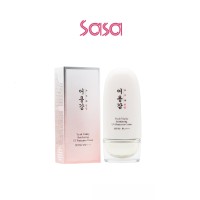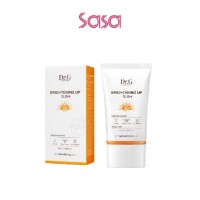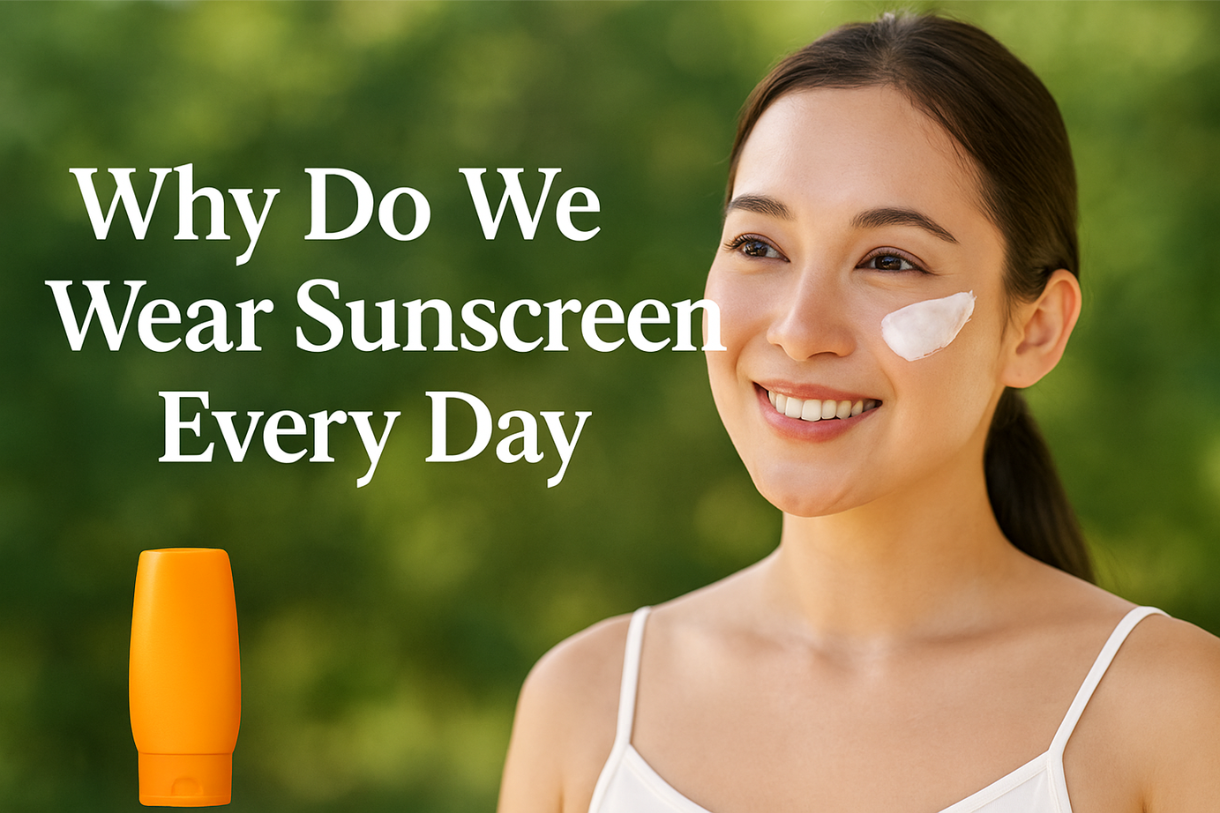
You step outside, and within minutes, Malaysia’s sun feels like it’s hugging your skin a little too tightly. But here’s the truth: even when you’re dodging rain storms during monsoon season or sitting by a window at work, UV rays are still working overtime.
The Malaysian National Cancer Registry reports that skin cancer cases have surged by 40% in the last decade, with basal cell carcinoma and squamous cell carcinoma topping the list.
So, why the rise? Blame it on myths like “I don’t need sunscreen if I’m indoors” or “Dark skin doesn’t burn.” Science disagrees: UVA rays (the aging ones) and UVB rays (the burning ones) don’t care about your plans. They penetrate clouds, windows, and even hats. The Skin Cancer Foundation confirms that daily use of SPF 30 or higher cuts melanoma risk by 50%.
Take it from real-world data: A 2023 study by Universiti Malaya found that 65% of Malaysians skip sunscreen entirely, while 20% only apply it on “days at the beach.” But here’s the good news: Simple changes, like using a facial sunscreen with zinc oxide or titanium dioxide, can shield your skin without the dreaded white cast.
Ready to make sun protection non-negotiable? Let’s start with the basics—no fluff, no scare tactics, just facts that matter.
Choosing the Right Sunscreen for Malaysia’s Humidity
Malaysia’s heat and humidity can turn sunscreen into a sticky nightmare—but it doesn’t have to. The key is finding formulas that fight sweat, block UVB and UVA rays, and vanish into your skin. Here’s what to look for:
1) Lightweight, Non-Greasy Formulas
Heavy creams can clog pores in tropical weather. Look for “water-based” or “gel” textures. For example:
- Biore UV Aqua Rich Watery Essence SPF 50+: Feels like a splash of water, ideal for oily skin.
- Neutrogena Ultra Sheer Dry-Touch SPF 50+: Dries matte, even during lunchtime walks.
2) Mineral vs. Chemical: Which Works Best?
Mineral (zinc oxide, titanium dioxide) sits on top of skin and reflects rays—great for sensitivity. Try:
- La Roche-Posay Anthelios Invisible Fluid SPF 50+: No white cast, blends like a primer.
- Innisfree Daily UV Defense Cream SPF 50+: Tinted option for quick makeup days.
Chemical sunscreens absorb UV light but may irritate some skin—choose what suits your routine.
3) Water-Resistant for Monsoon Survival
- Anessa Perfect UV Sunscreen Skincare Milk SPF 50+: Stays put during hikes or downpours.
- Sunplay Skin Aqua UV Moisture Milk SPF 50+: Reef-safe and sweat-resistant.
4) Don’t Forget Neck & Hands
A 2022 Universiti Putra Malaysia study found 80% of users skip these areas. Use sprays/sticks for quick touch-ups:
- Nivea Sun Protect Super Water Gel SPF 50: Easy spray application.
- COSRX Aloe Soothing Sun Cream SPF 50+: Gentle enough for kids and hands.
5) Reapply Without the Hassle
Reapply every two hours (even indoors). Keep a portable option:
- Cetaphil Sun Kids SPF 50+: Compact and tear-free.
- Shiseido Anessa Perfect UV Sunscreen Stick SPF 50+: Glides over makeup.
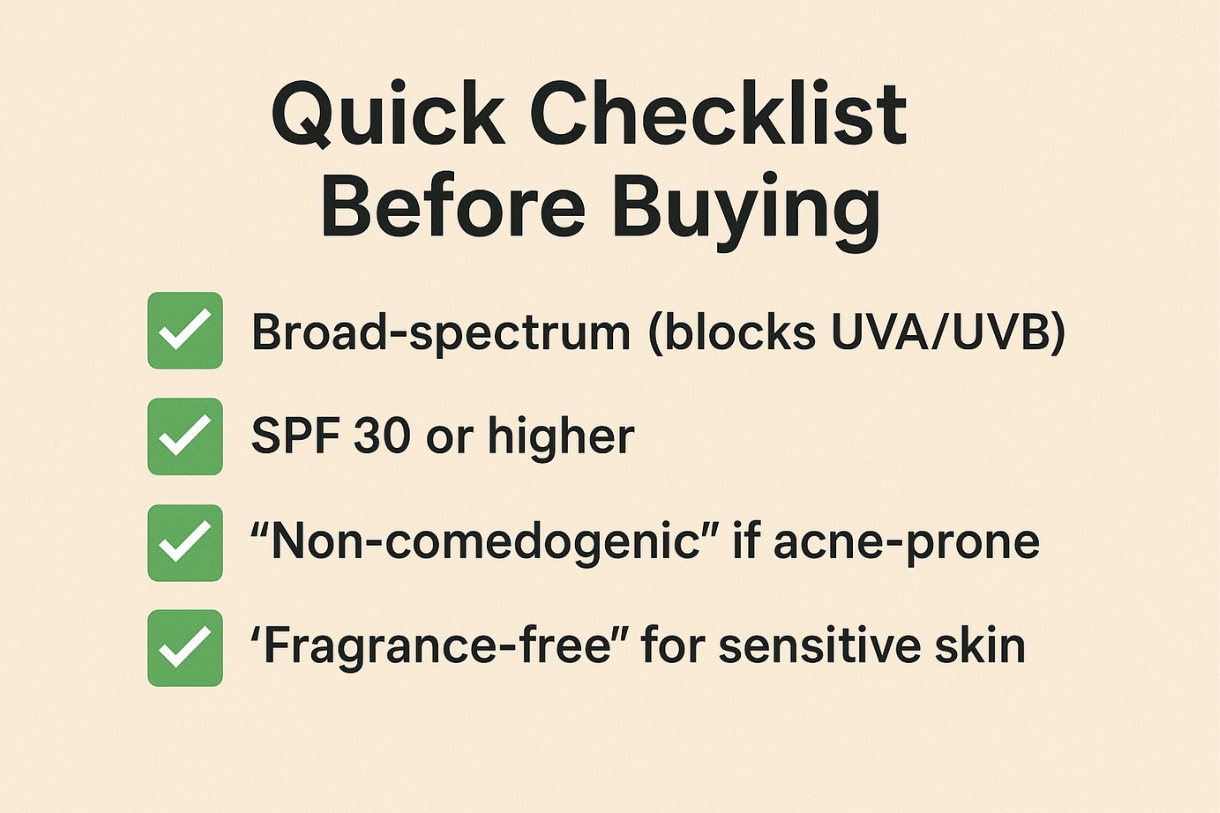
Quick Checklist Before Buying
- Broad-spectrum (UVA/UVB)
- SPF 30 or higher
- “Non-comedogenic” if acne-prone
- “Fragrance-free” for sensitive skin
Why This Matters: Using the right sunscreen cuts sun-damage risks by half (Skin Cancer Foundation). Yet many Malaysians avoid SPF due to sticky textures—choose modern lightweight formulas and break the cycle.
Debunking 5 Sunscreen Myths
In a tropical climate, sunscreen myths fuel premature aging, sunburn, and rising skin cancer rates. Let’s swap myths for facts.
Myth 1: “I Don’t Need Sunscreen If I Stay Indoors”
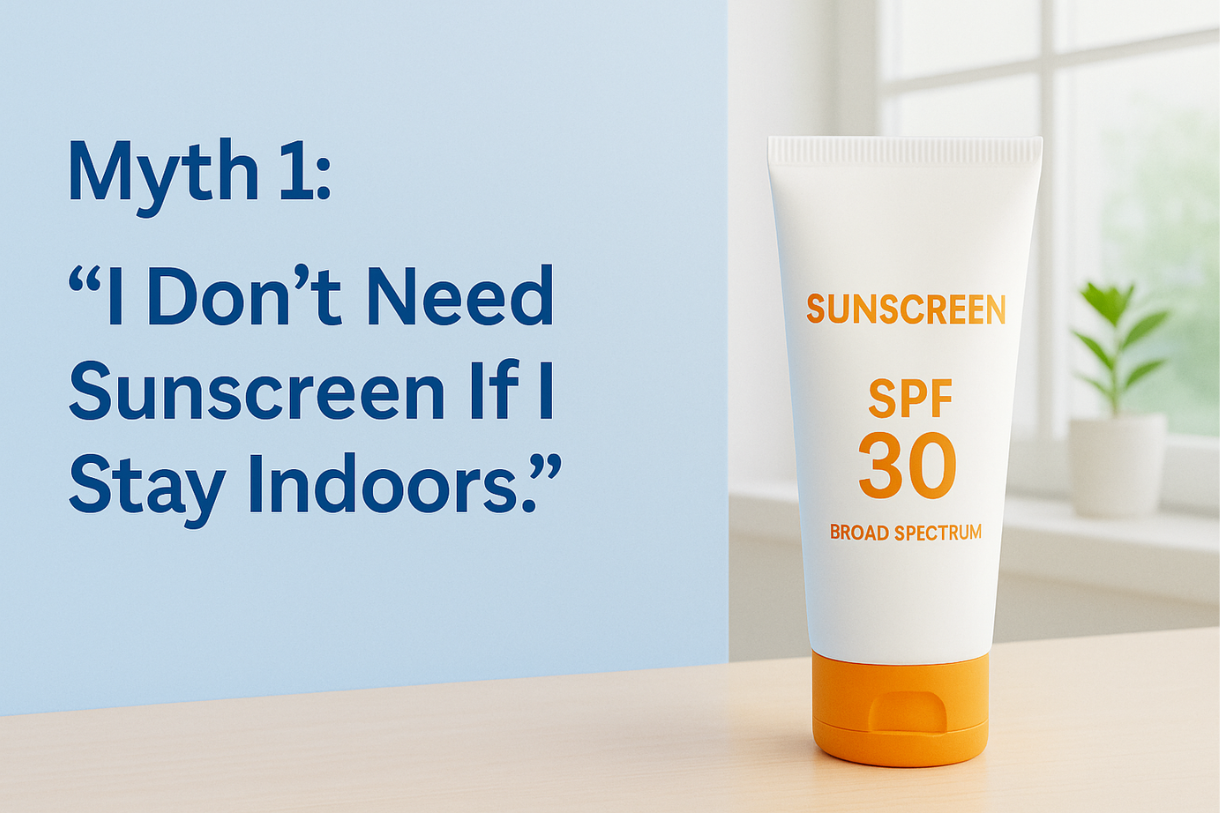
The Truth: UVA rays penetrate glass and clouds and slowly break down collagen, causing wrinkles and dark spots.
Do this: Apply SPF every morning, choose broad-spectrum with strong UVA protection (e.g., PA++++), and add UV-blocking window film if you sit by windows.
Myth 2: “People With Dark Skin Don’t Need Sunscreen”
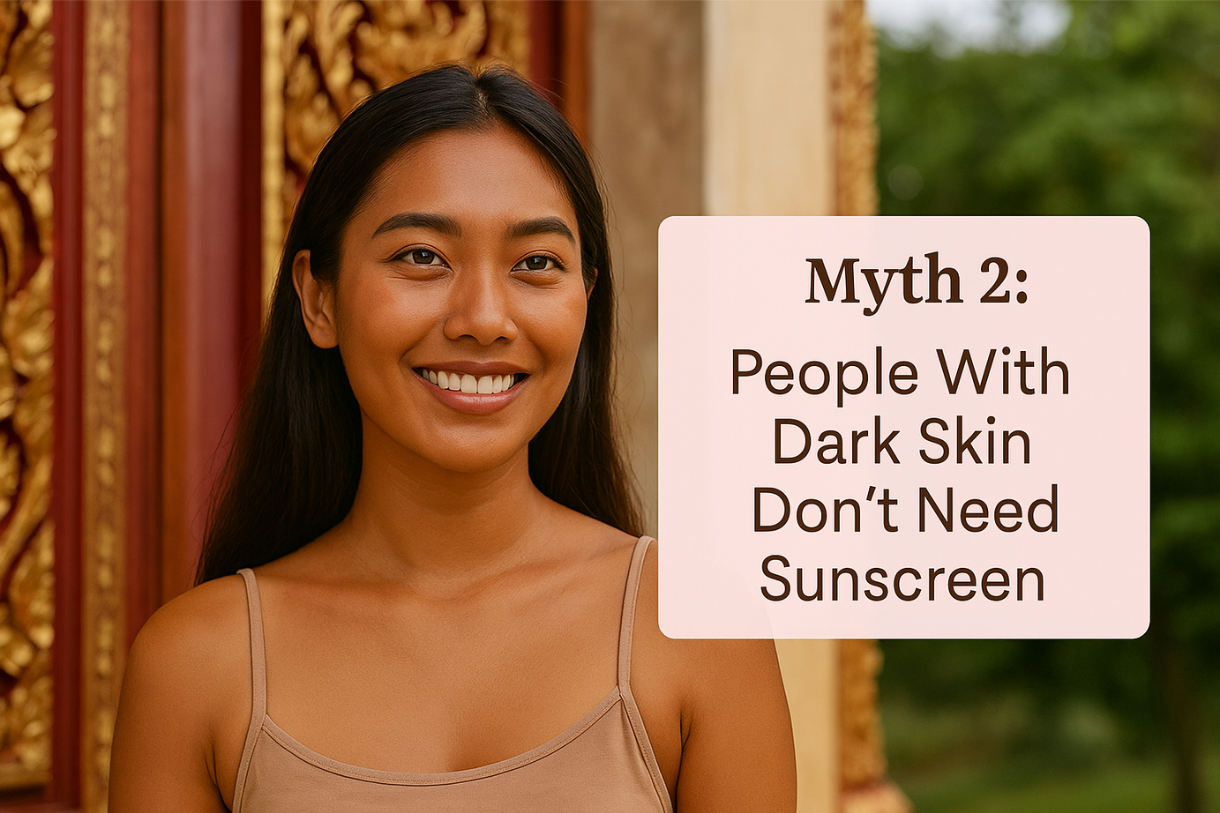
The Truth: Natural melanin is ~SPF 3–4—not enough for full protection. All skin tones can develop sun damage and skin cancer.
Do this: Try sheer/invisible mineral formulas (zinc oxide or titanium dioxide) to avoid white cast; teach friends/family that sunscreen is about health, not skin color.
Myth 3: “High SPF Means I Don’t Need to Reapply”
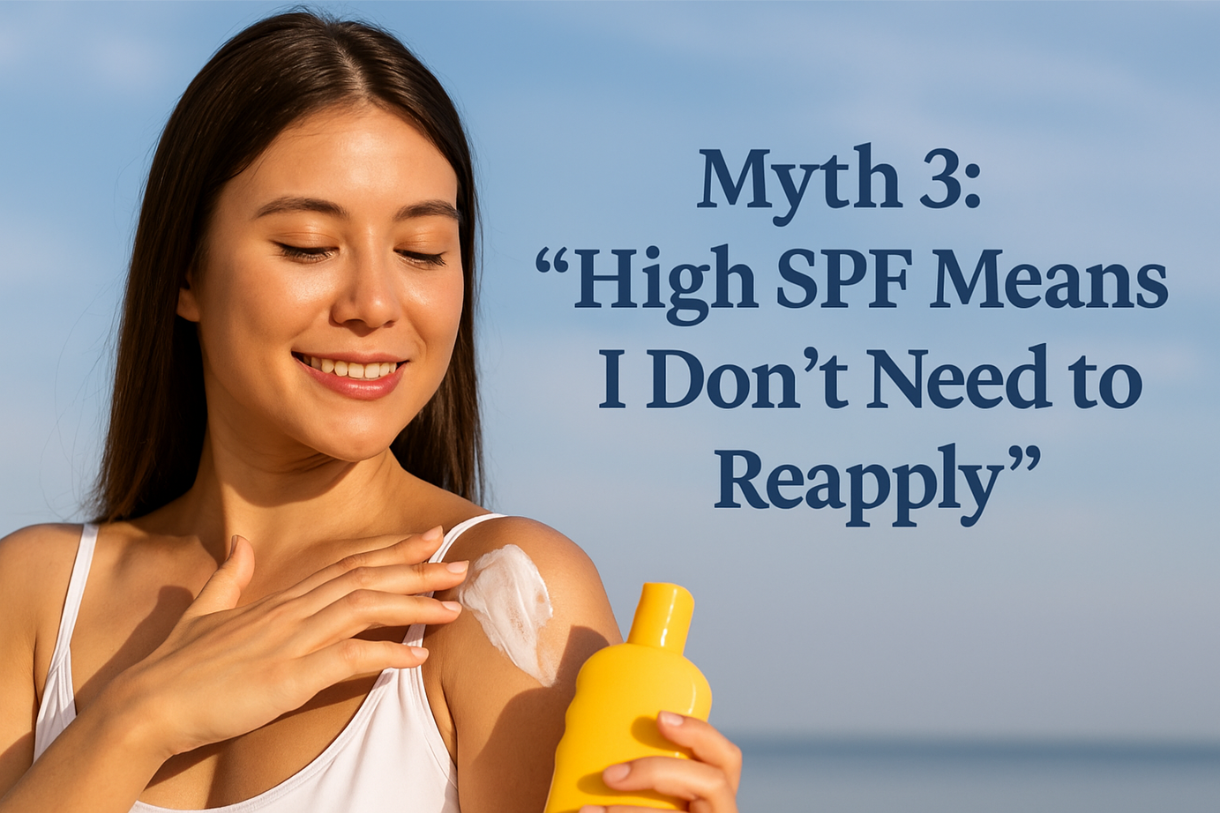
The Truth: SPF rates UVB only; no sunscreen is truly waterproof. Even water-resistant formulas fade after 40–80 minutes.
Do this: Reapply every two hours (and after swimming/sweating). Focus on broad-spectrum, not just higher SPF numbers.
Myth 4: “Sunscreen Blocks Vitamin D”
The Truth: You need only brief casual exposure for vitamin D, and sunscreen doesn’t block all UVB.
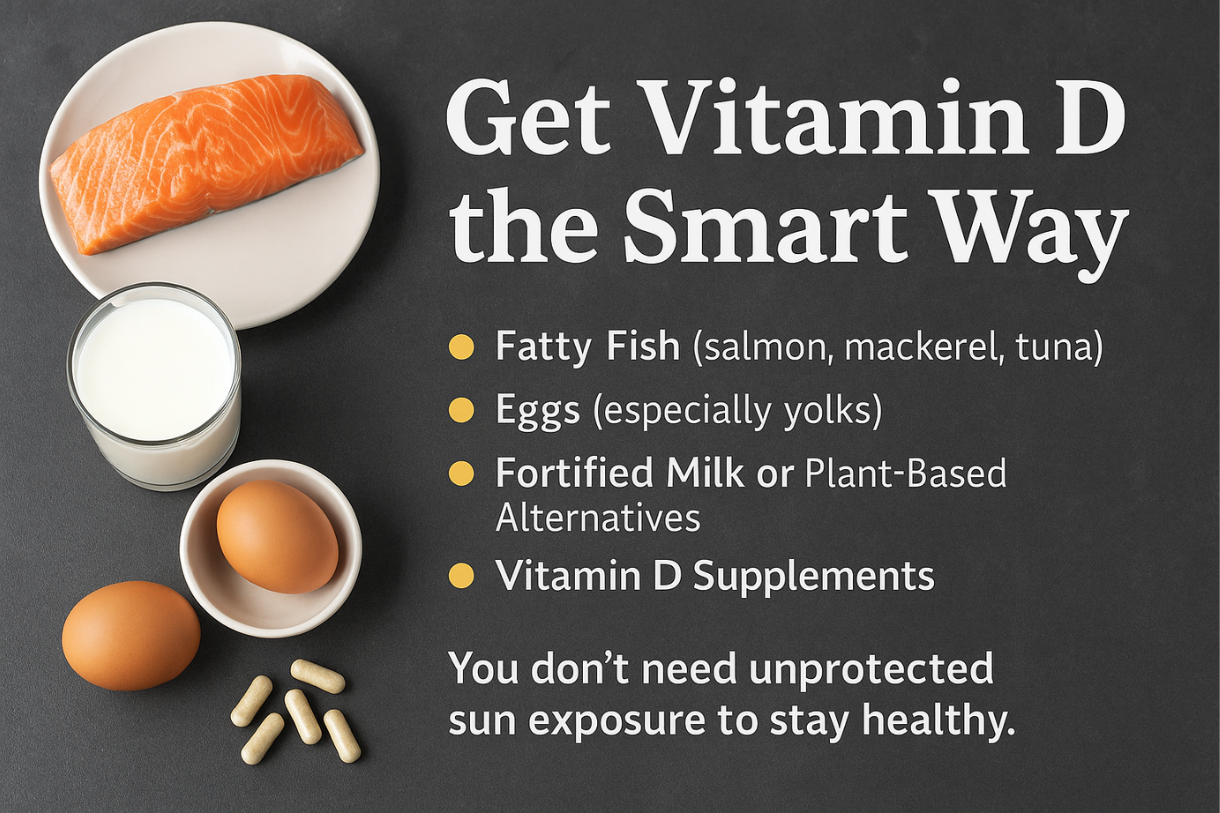
- Get vitamin D from food (fatty fish, eggs, fortified milk) or supplements.
- Wear sunscreen daily—risks of UV damage outweigh “extra” sun exposure.
Myth 5: “One Layer of Sunscreen Is Enough”
The Truth: Most people apply only 25–50% of the needed amount. Uneven, thin layers leave gaps.
- Use the “two-finger rule” for face/neck.
- Cover missed spots: ears, neck, backs of hands.
Building a Sunscreen Habit That Sticks
Why Your Skin Needs Armor (Even on Cloudy Days)
UV rays penetrate clouds, car windows, and offices. Over time, invisible exposure adds up—dark spots, fine lines, and loss of firmness. Treat SPF like brushing your teeth.
5 Painless Ways to Never Forget SPF
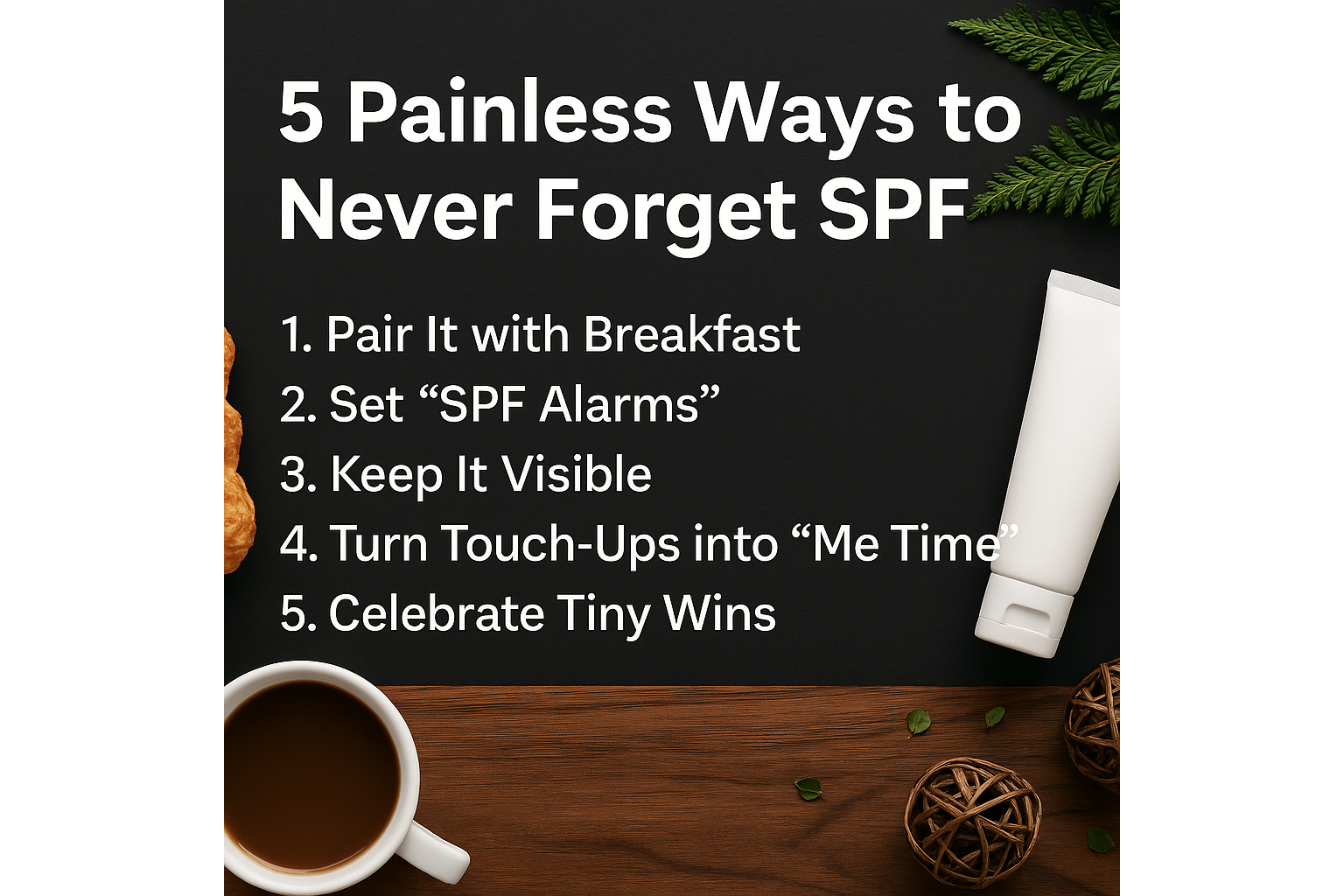
- Pair it with breakfast: Apply while your nasi lemak heats. Use two-finger rule for face/neck.
- Set SPF alarms: 9AM and 3PM reminders to reapply—indoors too.
- Keep it visible: Store next to keys/wallet. Mineral SPF suits sensitive skin.
- Make touch-ups “me time”: Reapply every two hours; hydrate and stretch.
- Celebrate tiny wins: Reward streaks—habits stick when they feel good.
But What If You Hate the Feel?
- Gel-based: disappears on oily skin.
- Tinted: doubles as light makeup.
- Mist: quick reapplication over makeup.
Why This Works for Malaysians
- Humidity-proof picks: lightweight textures that won’t melt.
- No myths: all skin tones need sun protection.
- Easy cues: tie SPF to daily moments (traffic, lunch breaks).
The Bottom Line
Progress over perfection. Missed a day? Restart. Daily sunscreen is your skin’s shield against UV damage, premature aging, and skin cancer risk.
Frequently Asked Questions
1) Can I skip sunscreen on cloudy days?
No. UVA penetrates clouds and windows. Use SPF daily.
2) Does sunscreen expire?
Yes—typically 1–2 years. Expired SPF loses effectiveness; store away from heat.
3) Can I use body sunscreen on my face?
Not ideal. Body formulas can be heavier; choose facial, non-comedogenic SPF.
4) Will sunscreen make my skin darker?
No—SPF helps prevent sun-induced dark spots. Many modern formulas are invisible.
5) How do I get rid of sunscreen stickiness?
Match texture to skin: gels (light), sticks/sprays (easy touch-ups). SPF 30 is sufficient for most.
6) Do I need sunscreen if I’m covered up?
Yes. Clothing doesn’t block all UV. Protect exposed areas with SPF 30+.
7) Can I reuse yesterday’s sunscreen?
No. Apply fresh each day; sweat and dirt degrade protection.
8) What if I hate the smell?
Choose fragrance-free options; many ranges offer unscented formulas.
9) Is sunscreen bad for acne?
Pick non-comedogenic gels/fluids. The right SPF won’t clog pores.
10) Can I just use an umbrella?
No. UV reflects off water/sand; pair shade with sunscreen for full coverage.
Author
Mei Ling Cheng is a seasoned beauty expert with over 15 years of experience in makeup artistry and skincare consulting. As a leading beauty advisor at Sa Sa Malaysia, she helps customers achieve flawless, long-lasting looks.
Featured Products in this Post
Related Posts
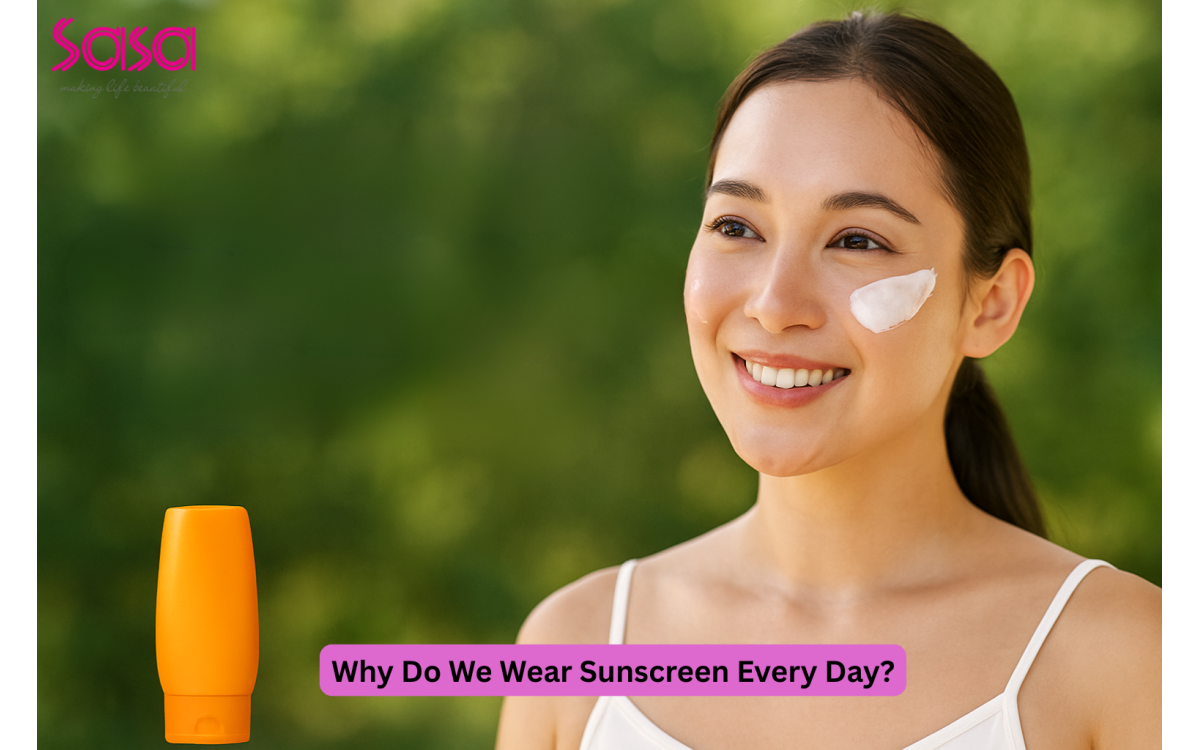
Why Do We Wear Sunscreen Every Day?
